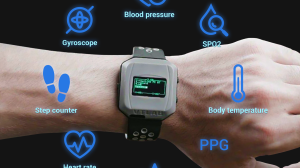In today’s fast-paced world, staying healthy and maintaining an active lifestyle is a priority for many. Wearable fitness gadgets, commonly known as fitness trackers, have become invaluable tools for individuals looking to monitor their physical activity and make informed choices about their health. This article explores the role of wearable fitness gadgets in tracking your way to a healthier lifestyle.
The Rise of Fitness Trackers
Fitness trackers have gained immense popularity in recent years, and their adoption shows no sign of slowing down. These wearable devices are designed to monitor various aspects of your physical activity and provide insights into your health and fitness. Here’s how they are helping individuals lead healthier lives:
1. Activity Tracking: Fitness trackers record data on the number of steps taken, distance covered, and calories burned. This information gives users a clear picture of their daily activity levels.
2. Heart Rate Monitoring: Many fitness trackers come equipped with heart rate sensors that provide real-time data on your heart rate. This feature is valuable for tracking your cardiovascular health and exercise intensity.
3. Sleep Tracking: Adequate sleep is essential for overall well-being. Fitness trackers offer sleep tracking capabilities, monitoring the duration and quality of your sleep. This data helps you identify areas for improvement in your sleep patterns.
4. Sedentary Reminders: Sedentary lifestyles have become a major concern. Fitness trackers send reminders to get up and move after periods of inactivity, promoting a more active daily routine.
5. Goal Setting and Gamification: Fitness trackers allow users to set personal fitness goals and track their progress. Many incorporate gamification elements, turning physical activity into a fun and competitive challenge.
6. Nutrition and Calorie Intake: Some fitness trackers allow users to log their food intake and monitor calorie consumption. This feature helps individuals maintain a balanced diet.
7. Social Integration: Many fitness trackers have social features that allow users to connect with friends and family. This social support can be a powerful motivator to stay active and healthy.
8. GPS and Route Tracking: GPS-enabled fitness trackers track your routes during outdoor activities like running or cycling, providing maps and performance data for review.
9. Heart Rate Zones: Users can track their heart rate zones during exercise, ensuring they are working out at the desired intensity for their fitness goals.
10. Health Insights: Fitness trackers use the data they collect to provide insights and recommendations for improving health. These insights can help users make informed choices about their physical activity and overall wellness.
The Future of Fitness Tracking
As technology continues to advance, the capabilities of fitness trackers will expand. Future trends in fitness tracking may include more advanced sensors, such as blood pressure monitoring and ECG readings. Integration with mobile health apps and telehealth services is also likely, providing users with a more comprehensive view of their health.
Conclusion
Wearable fitness gadgets have become indispensable tools for anyone seeking a healthier lifestyle. They empower individuals to take control of their health by providing valuable data, insights, and motivation. Whether you’re an avid athlete or just starting your fitness journey, a fitness tracker can be a powerful companion in your pursuit of a healthier, more active life. With wearable fitness gadgets, tracking your way to a healthier lifestyle has never been more accessible and motivating.













Add Comment